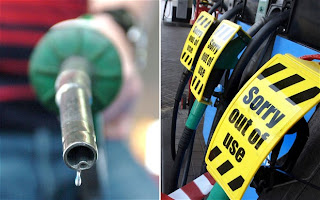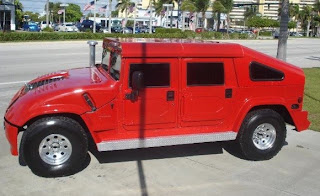Diesel engine designs striving to increase engine performance have made great advancements in engine fuel delivery to the combustion chamber. Today’s diesel engine is quieter, smoother, and more powerful. But today’s
diesel engine owners are overlooking one important factor. The quality of today’s diesel fuel has not advanced at the same rate as the engine improvements.
Diesel fuel begins to deteriorate as soon as it is produced. Within 30 days of refining, all diesel fuel regardless of brand, goes through a natural process called re-polymerization and oxidation. This process forms varnishes and insoluble gums in the fuel by causing the molecules of the fuel to lengthen and bond together. These components now drop to the bottom of the fuel tank and form asphaltene also known as diesel sludge. The fuel begins to turn dark in color, smell bad, and in most cases causes engines to smoke. The engines smoke because some of these clusters in the early stages are small enough in size to pass through the engine filtration and into the combustion chamber. As these clusters increase in size, only part of the molecule gets burned. The rest goes out the exhaust as unburned fuel and smoke. With increases in cluster size they begin to reduce the flow of fuel by clogging filters. The filters only address the symptom and not the cause.
It is estimated that eight out of every ten diesel engine failures have been directly related to poor quality and contaminated fuel. The build-up of contaminates in the fuel systems and storage tanks can quickly clog filters, thus resulting in engine shut down, fuel pump wear, and diesel engine damage.
Understand that most fuel has some amount of water in it from either condensation or vents. This threat requires that we realize the added burden placed upon diesel fuel as opposed to gasoline. Gasoline acts as a fuel only. Diesel fuel, on the other hand, also must cool and lubricate injection system parts. These parts are engineered to very close tolerances - up to 0.0002 of an inch - and any contamination means rapid part wear. Water displaces the diesel fuel. When the fuel is displaced wear occur because lubrication is now absent.
Water that enters the combustion chamber results in even more serious damage. When it comes in contact with the heat of the combustion chamber (in excess of 2000 degrees F), it immediately turns to steam and often explodes the tip of the injector. Water causes corrosion of tanks, lines, injectors, and greatly reduces combustibility.
Other areas of concern include the producing more exhaust emissions and effecting EPA standards.
Bacteria also present a serious problem. Bacteria feed on nitrogen, sulfur, and iron that may be present in the fuel or tank.
Then there are algae. There are absolutely no algae in diesel fuel. You may have fungus and microbial contamination but no algae. This is a misnomer for diesel sludge. So if you have a diagnosis of ALGAE and add a biocide, you have done two things, 1) found a mechanic that is wrong and 2) done nothing to fix the problem.
Why is there so much bad fuel?
The number one reason is due to the increased popularity of diesel power and the accompanying increased demand for more diesel fuel. There was a time when diesel fuel remained in the refinery storage tanks long enough to naturally separate and settle, allowing the clean fuel to be drawn off. Now with increased demand, diesel fuel never remains stationary long enough for settling, and the suspended water and solids are passed on to you, the user.
The change in refinery techniques is another problem. In order to get more products per dollar; diesel fuel is now being refined from more marginal portions of the crude oil barrel. This results in a lower-grade product that is inherently thicker and contains more contamination.
Thirdly, current fuel distribution methods also have a negative impact on the condition of the fuel at the time of delivery. In many cases, brokers control fuel sales to major distribution terminals and determine delivery dates. There is no telling how long that fuel has been in the distribution network and how many times it has been transferred. Seldom do these distributors filter the fuel as they transfer it.
The solution: Multifunctional diesel additive packages and hardware. For your single vehicle or fleet the improvement of fuel quality by the use of additives and current technology is always a good choice.
Many diesel fuel additive packages address the key issues with respect to fuel performance; some improve fuel economy, increase lubricity, improving cold flow, and improve cetane number. And some only address the issue of rust and corrosion, but all should be considered.
Most diesel fuel additives contain combustion improvers that release oxygen during the compression stroke. This allows combustion to start sooner, providing for a more complete fuel burn. A more complete burn provides all the power your fuel and engine is capable of producing. As combustion improvers and you get a smoother running engine, an increase in horsepower that improves fuel economy and the reduction in black smoke emissions.
Cetane is a performance rating of a diesel fuel, a higher cetane number or cetane rating indicates greater fuel efficiency. The fuel’s cetane influences, duration of white smoking after start-up, drivability before warm-up, and intensity of diesel knock at idle. Increase the cetane number of a fuel and you have improved performance.
In diesel fuel systems, the fuel provides lubrication for the fuel pump and injectors. A fuel with poor lubricity can cause excessive wear and premature failure of these components. Improve lubricity and extend engine life.
Diesel fuels have pour points (the lowest temperature at which an oil or other liquid will pour under given conditions) within the range of normal winter temperatures. As a fuel approaches its pour point, paraffin in the fuel form wax crystals that prevent it from flowing. Flow-improver additives modify the wax crystals, lowering the pour point of the fuel and give better cold weather performance.
For on-sight storage tanks other issues must be looked at. On-sight storage tanks always have a small amount of the first gallon of fuel ever put in them, unless it is drained 100% and cleaned. So adding new, fresh fuel always has a bit of the bad added to it every time fuel is purchased. Diluting the bad with good over time is a loosing battle. The fuel will always be bad fuel until the core problem is addressed
The order of treatment for fuel related problems should always begin with a determination of whether there is water in the fuel and if the fuel has microbes (fuel bugs) in it. Water Paste and Fuel Test Kits can be used for this stage of maintenance. If microbes are detected, then the use of biocides is needed. Biocides have no effect on and will not eliminate the sludge problem. Biocides kill bacteria, that’s all!
The water issue should always be remedied first by the use of fuel water separators on the tank or on the equipment. Next a multifunctional chemical additive should be added to improve fuel performance and then if needed a problem specific additive to dissolve
diesel sludge and or a rust inhibitor to protect steel tanks. For long-term prevention, the use of magnet fuel conditioners is recommended. These devices continually reverse the re-polymerization of the fuel during circulation and reduce the need for ongoing additive use. All the needed cures are available from Dotcom Desel at
www.dotcomdiesel.comThere is no good time to find out that your engine won't operate or that half its life span is gone prematurely because of contaminated or poor quality diesel fuel. Since no one can predict a breakdown, the only safe method is prevention.
Realize now that you do have a problem, and manage it now, or deal with the unexpected catastrophe and reduced equipment life that comes at the absolutely wrong time and is not in the budget!
Dot Com Diesel






